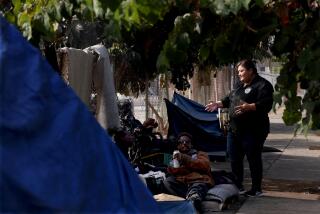Column: For both the housed and unhoused in this Hollywood neighborhood, help is urgently needed
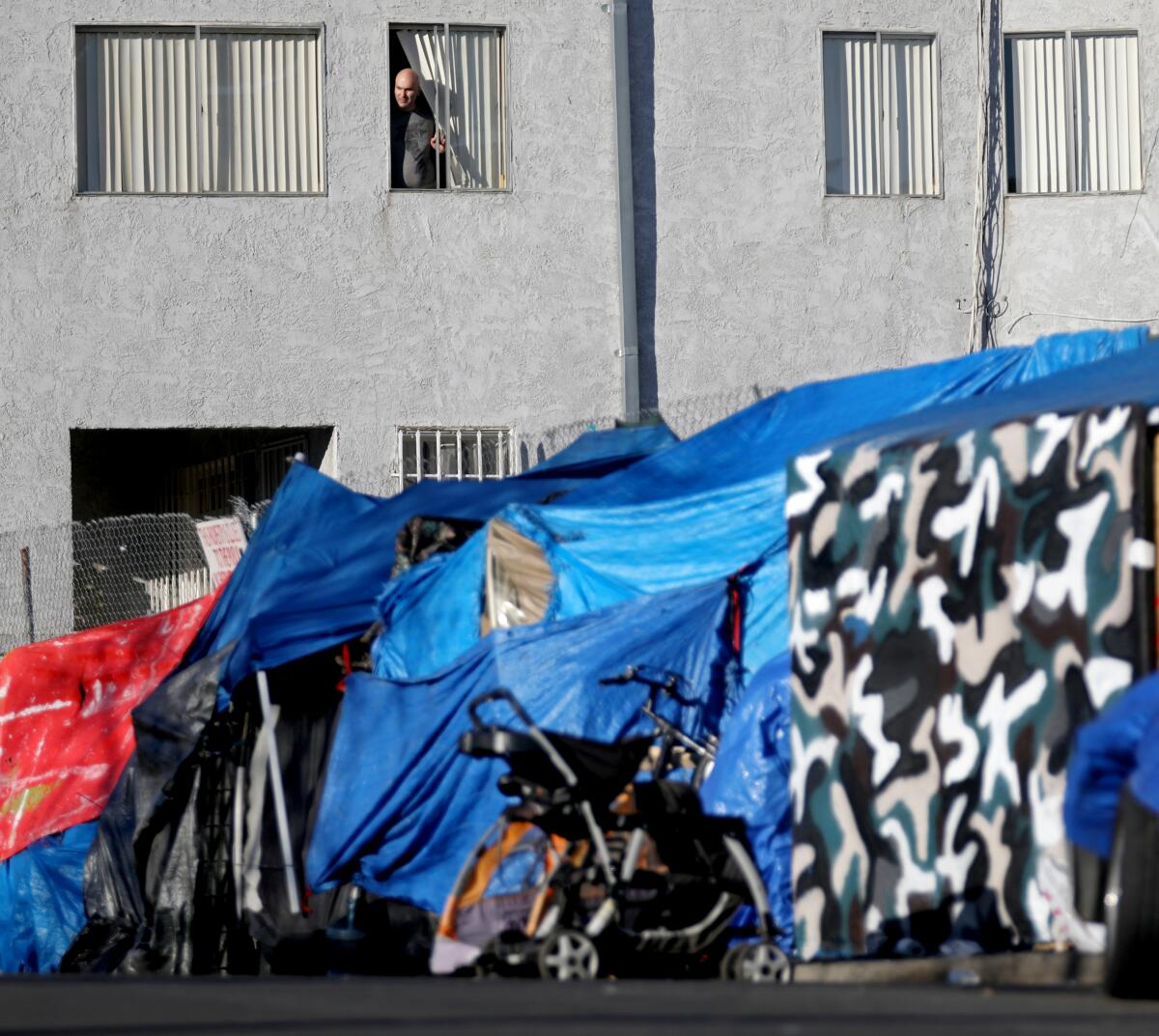
- Share via
For the last year or so, the growing homeless encampments near the intersection of Hollywood Boulevard and Berendo Street have served as an example of how local government is failing two groups of people:
Those living in the tents, and those living in nearby houses and apartments.
The situation in this neighborhood along the East Hollywood-Los Feliz border is not unique, of course. Multiply it by hundreds of times across Los Angeles County, with its staggering homeless population of more than 66,000, according to the 2020 count.
What is a little different, though, is that the people who live indoors on Berendo were hoping things would get better after Nithya Raman was elected to the Los Angeles City Council last fall, ousting David Ryu in the district that serves the area.
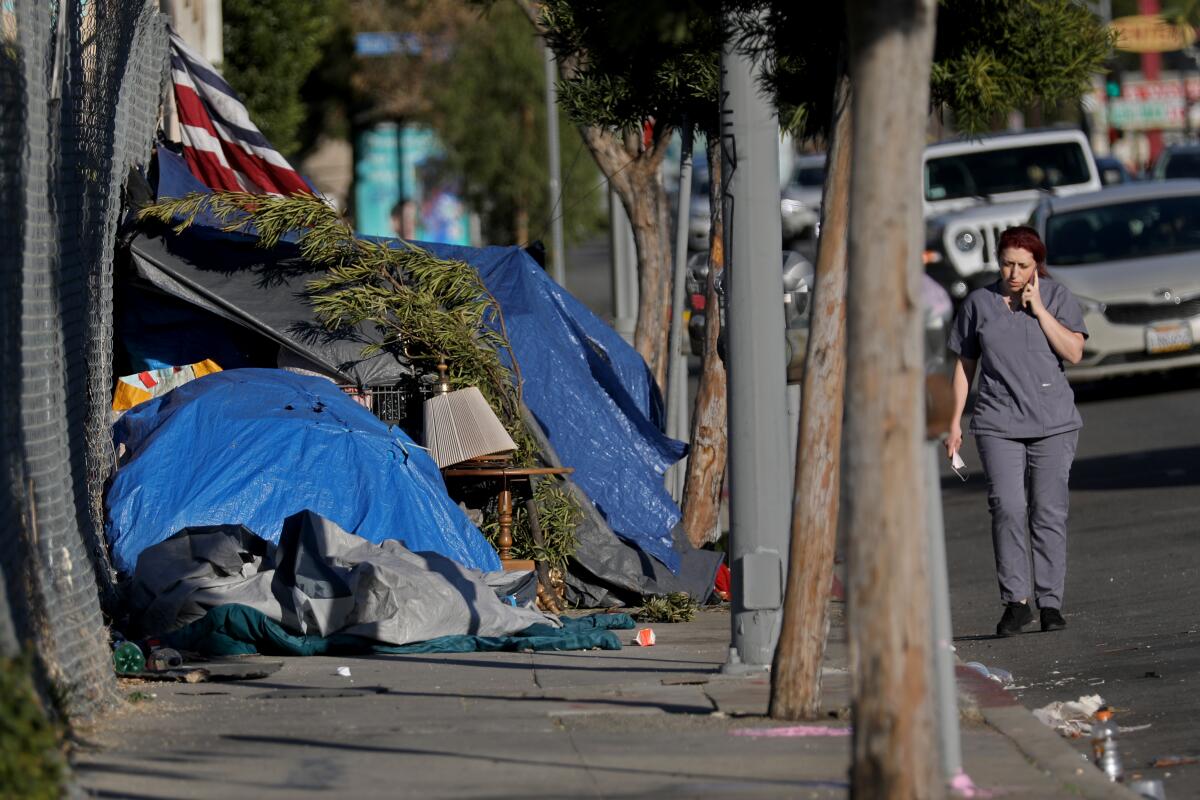
Raman, running as a progressive candidate, accused city officials of being asleep at the wheel, and she had one plan for affordable housing and another for addressing homelessness. And she wasn’t new to the conversation, having co-founded a neighborhood coalition called SELAH, which works to serve the needs of the unhoused and treat them as full-fledged members of the community.
So how’s it going so far?
Not so good, say the housed residents of Berendo.
And Raman?
“I understand people’s frustrations,” she said. “This has been going on a long time, and we are new to it and putting in a lot of time” to understand the challenges and the solutions.
Certainly, a lot of this is complicated, and Raman told me that’s more clear to her now that she’s on the inside. But I’m still hoping that she, Kevin de León and Mark Ridley-Thomas — the newest members of the City Council, all of whom campaigned in part on solutions — will bring new ideas and greater urgency to the subject.
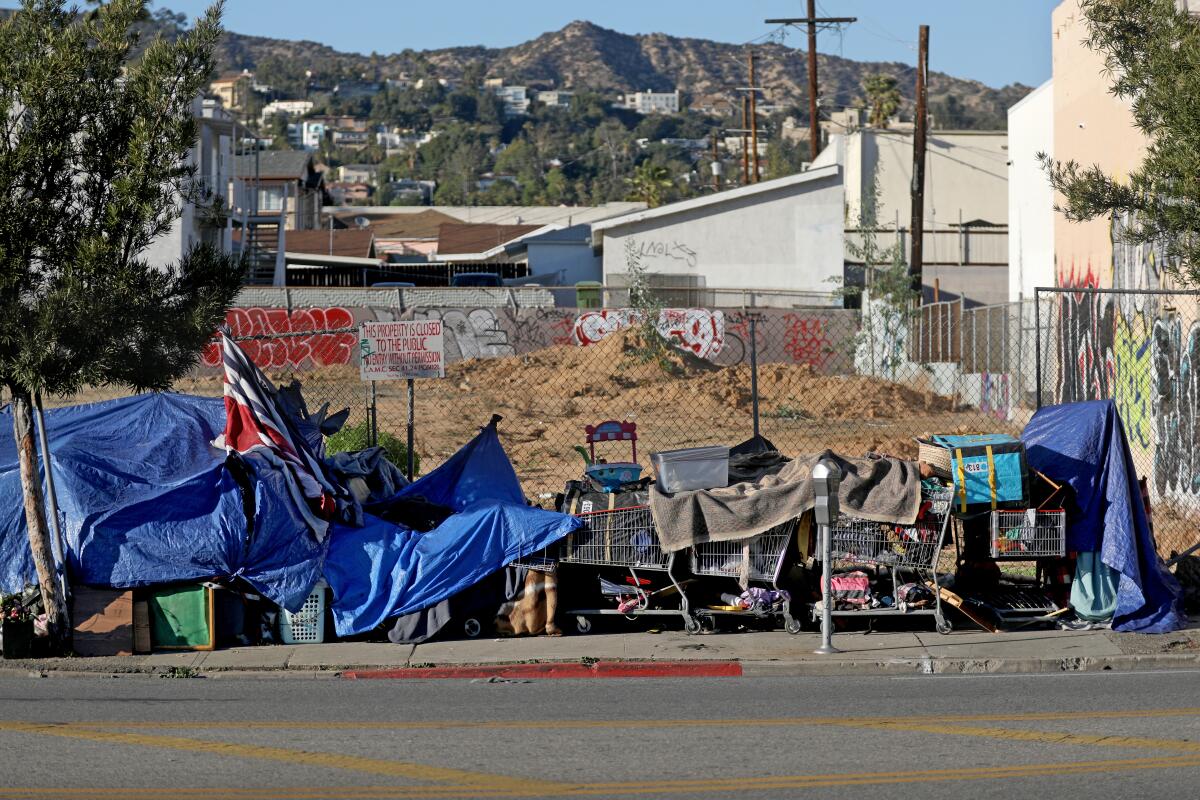
I’ve been in touch with a group of Berendo residents since July, and they have repeatedly told me they are not without compassion for their less fortunate neighbors. But they are exhausted by frequent criminal activity on their block — much of it targeting the homeless people themselves — and by the empty promises they’ve heard again and again from city officials.
They do give credit to Raman’s staff for hosting meetings every two weeks, hearing them out and updating them on efforts to work with various city agencies and nonprofits in search of solutions. But given that Raman’s experience meant she knew service providers, community leaders and public officials, they were expecting more than meetings.
“It’s all talk, talk, talk,” said one neighbor. “It’s a joke. Ryu passed the buck, and I don’t see what actual plans Nithya’s office has.”
The neighbors aren’t callous. They have sympathy for the many homeless people living in Hollywood who are truly down on their luck. But some of those living under blue tarps on Berendo have intimidated neighbors, they say, exploiting other homeless people and drawing the attention of police.
One neighbor called it the Wild West, with “no accountability, no enforcement of laws.” If you speak up about this, said the neighbor, you’re vilified by some homeless advocates — a big part of Raman’s progressive base — for lacking understanding or compassion.
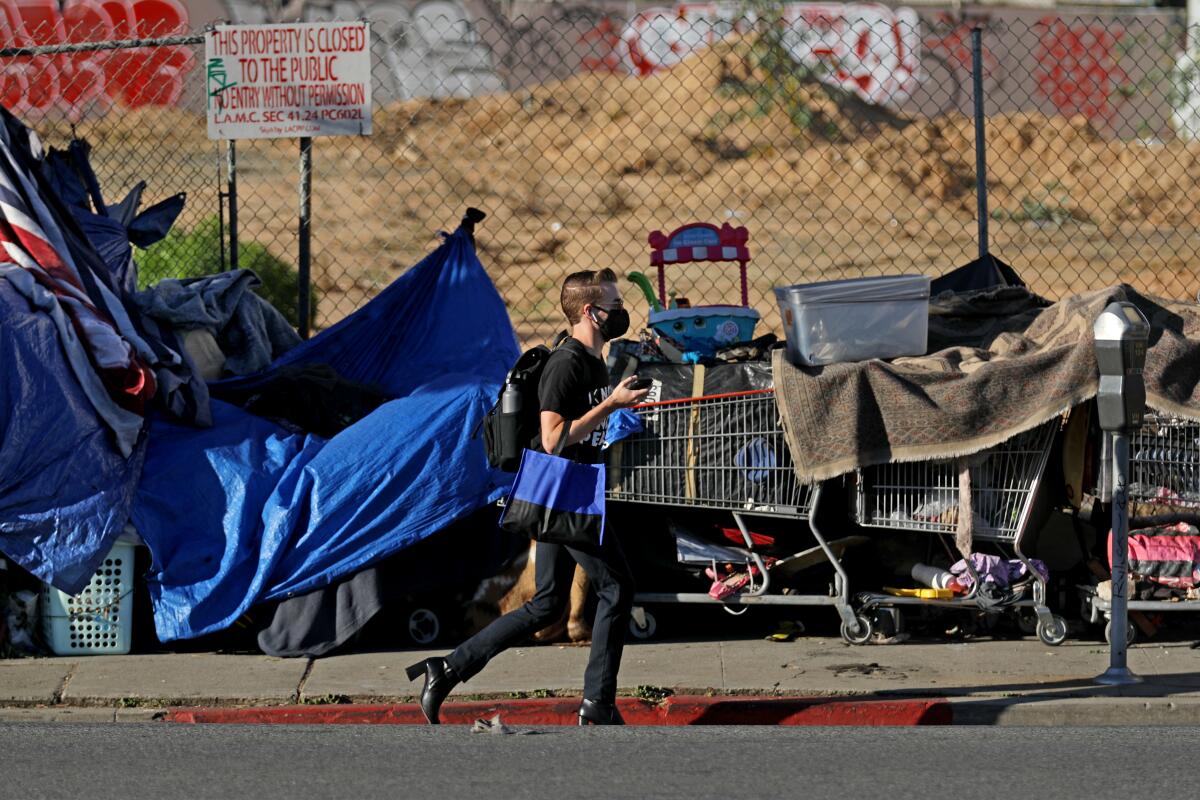
“There are none of us who don’t want the best for anyone who’s having hard times and is homeless, but we also want safety restored for everybody, the homeless included,” he said, adding that many elderly residents no longer walk down Berendo — which is blocked by tents on one side — to go to nearby stores.
Some of the homeless people from Hollywood Boulevard have been “enslaved into prostitution and given drugs by criminals who are taking advantage of them,” he said. (I’m withholding names at the request of Berendo residents who fear retaliation for their remarks).
Housed residents say that for a year or more, a drug operation has thrived on the south end of Berendo, cars and properties have been vandalized, bikes have been stolen, heavy machinery is operated at night — residents suspect there is a chop shop handling stolen auto parts — and shots were fired recently in what police described as an apparent dispute over ownership of a vehicle.
“Neither the mayor nor most of the City Council can differentiate homelessness from criminal activity operating under the pretense of homelessness,” said one neighbor.
It goes without saying that if you’re destitute enough to be living on the streets, it’s not likely you’re pretending. Homelessness is what happens when the divide between the haves and have-nots keeps widening, when the cost of housing soars while pay remains flatter than a dollar bill, when there’s never enough mental health care and when a drug epidemic keeps digging the hole deeper.
Have some people given up hope, and resorted to whatever means necessary to survive? No doubt, especially when, as we all know, the growing homeless population has swamped the number of new beds available to them. One woman I talked to at the intersection of Berendo and Hollywood last week told me she’s been homeless since losing a job as a security guard four years ago, doesn’t have a social worker and isn’t on any list for future housing.
But I understand the frustration of people like those on Berendo, and I hear from them often. In January, I sat in on one of the virtual meetings hosted by Raman’s staff, with a deputy city attorney and an LAPD officer joining the conversation.
It’s good that these meetings are happening, so neighbors can air complaints and get responses. But residents have seen little evidence that much progress has been made to date, partly because the city has focused on outreach and housing for those most vulnerable during the pandemic.
When a Raman staffer said the council office is developing a homelessness plan that involves multiple stakeholders, and hopes to establish a model that can be used throughout the city, I couldn’t suppress a yawn. It’s the kind of thing we’ve all heard for years.
The councilwoman’s staff did send residents a follow-up summary of specific plans to look into parking restrictions that might limit drug deals, to investigate utility theft, to bring in some gang intervention specialists, to address nuisance issues around a vacant lot and to develop a system for protecting residents against retaliation by allowing anonymous police reports.
But except for some credit to police for their efforts so far, residents told me they were losing patience that any significant changes will happen anytime soon.
“Each meeting they say they are still working on it,” one resident said after the meeting this past week. And in the encampments, it’s business as usual.
It’s because things are a mess, Raman said. Aside from the specifics of Berendo, she said she has been surprised by a lack of service coordination and continuity across public agencies and nonprofit contractors, and she’s asked the Los Angeles Homeless Services Authority for improvements.
“I’m not seeing accountability,” she said.
She’s glad to see progress on moving people into motels and hotels, but she wants to know more about mental health and substance abuse services and how they fit a larger strategy.
Raman said too many barriers, like code restrictions, stand in the way of building cheaper housing faster. Permanent supportive housing is important, she said, but it’s expensive and takes too long to build, and more options are needed, like shared housing.
I’m on board with all that, and Raman deserves some time in office to begin making her mark.
But as both the housed and the unhoused would say, let’s get it going.
More to Read
Sign up for Essential California
The most important California stories and recommendations in your inbox every morning.
You may occasionally receive promotional content from the Los Angeles Times.

